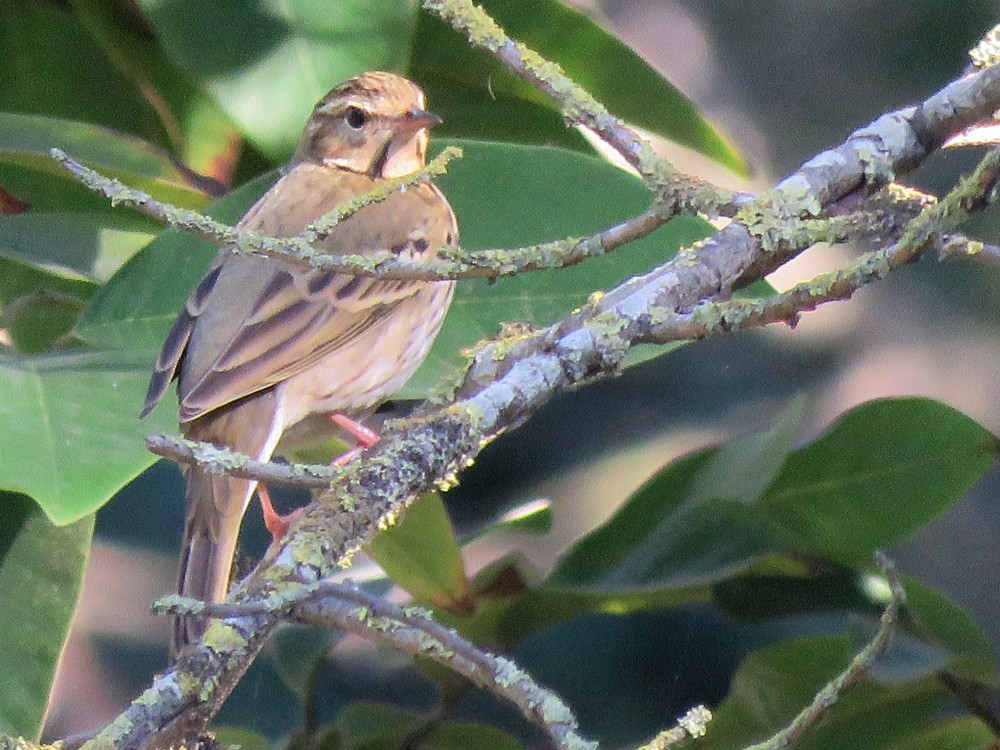At least two Olive-backed Pipits (Anthus hodgsoni) were found at Rabat on 5 November 2017 by Pedro Fernandes. This is the 6th record for Morocco.
Au moins deux – peut-être trois – Pipits à dos olive dans le Jardin d’Essais Botanique à Rabat le 5 novembre 2017 (Pedro Fernandes). C’est la 6ème mention pour le Maroc. Pour comparaison, il n’y a pas encore de mentions connues de l’espèce ni en Algérie (Isenmann & Moali 2000) ni en Tunisie (Azafzaf et al. 2015, Isenmann et al. 2005).
Pedro wrote in email:
“…tried to find a Yellow-browed Warbler at the local patch, but found something else which made me happier — at least two Olive-backed Pipits at the Jardin d’Essais”.
And this is true, until now there are more records of Yellow-browed Warbler (13 records) than Olive-backed Pipit. Plus he has already found Yellow-browed Warbler at Rabat in 2015 (a probable overwintering bird).
And added more details in eBird:
“First detected when one bird flew from the ground to a tree. Moving closer to it, it flew to another tree remaining exposed in a branch allowing the first pictures. A second bird was flushed, calling softly >ts<. Two more birds were flushed, one was a Meadow Pipit the other possibly another Olive-backed Pipit but could not be sure who was calling. The two birds that allowed good views had striking white superciliums, buffish in front of the eyes, with a black and a white spot on the ear, black line over the eyebrow, unstreaked greenish backs, and buffish tones on the edges of both greater coverts and tertials”.
Updates:
– On 12 November, Pedro confirmed the presence of a third bird. The birds remained in the same area where they were first detected (34.009635, -6.848952).
– On 16 November, Pedro found the three birds again at the same place. They are probably wintering in the garden.
– On 21 November, he found another bird at Forêt Moulay Abdellah (photos in eBird).
– To check if the last bird is different and not one of the others, next day he went to both sites and confirmed that they are indeed 4 different pipits. Pedro added in email: “Even if the locations are only 1.7 km apart, I cannot imagine these birds being one morning at one place, and the afternoon at another— they are clearly different birds. Now, when I have the chance, must visit other gardens in the area!”.


References:
- Azafzaf, H., Feltrup-Azafzaf, C., Dlensi, H. & Isenmann, P. 2015. Nouvelles données sur l’avifaune de Tunisie (2005-2014). Alauda 83: 7–28.
- Isenmann, P., & Moali, A. 2000. Oiseaux d’Algérie / Birds of Algeria. SEOF, Paris.
- Isenmann, P., Gaultier, T., El Hili, A., Azafzaf, H., Dlensi, H., & Smart, M. 2005. Oiseaux de Tunisie / Birds of Tunisia. SEOF, Paris.